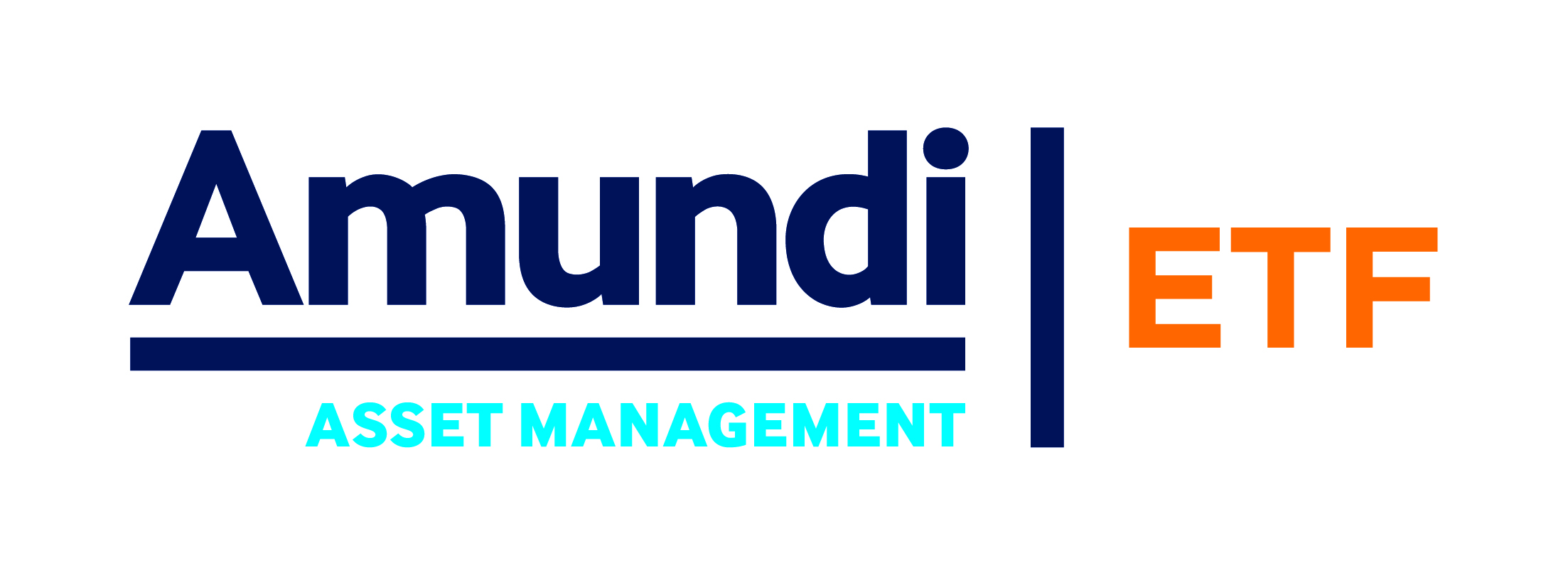Environmental, social and governance (ESG) investing is the most important trend in finance as investors and asset managers alike become more aware of the impact investments can have on the planet.
Through their rules-based and transparent approach, ETFs potentially offer investors a perfect way to gain exposure to the sustainable revolution.
However, as the number of ESG ETFs available in the European market continues to grow at a rapid rate, choosing between the different strategies is becoming a daunting task for investors.
According to data from Morningstar, there have been a record 72 ESG ETF launches in 2020, as at the end of October, 28 more than the previous record set in 2018 and up from 33 launches last year.
As a result of this rapid growth, ETF Stream has selected five ESG ETFs, incorporating ETFLogic data, to consider in portfolios.
Amundi MSCI World ESG Leaders Select UCITS ETF (SADW)
In June 2020, Amundi launched three ESG leaders ETFs that included the Amundi MSCI World ESG Leaders Select UCITS ETF (SADW).
SADW offers global exposure to mid and large-cap stocks from 23 developed countries with an ongoing charge of 0.18%. However, it is comprised of the leading stocks in terms of their ESG scores compared to their sector peers.
Using its ESG rating system, MSCI incorporates a best-in-class system by only selecting the highest scored companies which represent 50% of the market cap for each sector and region from the parent index.
Additionally, to avoid concentration risk, MSCI has enforced a 5% weighting cap so the stocks cannot exceed 5% weighting otherwise it will be reduced at each rebalance if the weighting grows as a result of outperformance. The rebalance is done on a semi-annual basis.
While it is comprised of the leading ESG scored stocks, SADW excludes companies involved in thermal coal, tobacco, alcohol, gambling, nuclear power and weapons, conventional weapons, controversial weapons and civilian firearms.
Top 5 holdings
Top 5 sectors
Top 5 countries
Microsoft (5.1%)
Information Technology (19.9%
US (65.4%)
Alphabet (Class A and C) (4.4%)
Health Care (14.1%)
Japan (9.1%)
Procter Gamble (1.6%)
Financials (12.6%)
Canada (3.6%)
NVIDIA (1.5%)
Consumer Discretionary (12.5%
France (3.5%)
Visa (1.4%)
Industrials (11%)
UK (2.9%)
SADW launched in June 2020 and therefore does not have a long history of performance. Its benchmark, however, has outperformed MSCI World all one, three and five-year durations, as at the end of October, by 0.71%, 0.94% and 0.47%, respectively.
ESG Score
Environmental Score
Social Score
Governance Score
58
64
59
54
Source: ETFLogic
HSBC Emerging Market Sustainable Equity UCITS ETF (HSEF)
HSBC Global Asset Management launched a low carbon ESG ETF range also in June 2020 which includes the HSBC Emerging Market Sustainable Equity UCITS ETF (HSEF). Tracking the FTSE Emerging ESG Low Carbon Emissions Select index, it has a three-step selection process and incorporates a three-fold tilt approach.
Using an initial population of the FTSE Emerging index, the first step excludes companies that are involved within controversial industries such as weapons and tobacco on an annual basis.
It then tilts the remaining stocks depending on their ESG scores, carbon emissions and fossil fuel reserves.
Finally, a post-tilt exclusion process is applied on a quarterly basis that removes companies that do not comply with the UN Global Compact principles.
The objective of HSEF is to offer exposure to companies from the emerging markets that are transitioning to a lower-carbon economy.
Top 5 holdings
Top 5 sectors
Top 5 countries
Tencent (10.7%)
Technology (27.5%)
China (47.6%)
Taiwan Semiconductor Manufacturing (9%)
Financials (26.9%)
Taiwan (14.4%)
Alibaba (4.6%)
Consumer Services (13.7%)
India (10.6%)
China Mobile (2.7%)
Consumer Goods (6.8%)
Brazil (5.1%)
Meituan Dianping (2.6%)
Telecommunications (5.8%)
South Africa (3.9%)
The FTSE Emerging ESG Low Carbon Select index has significantly outperformed its parent index over the longer time horizons. It has a five-year return of 53.5%, 4% greater than the FTSE Emerging index.
ESG Score
Environmental Score
Social Score
Governance Score
58
64
61
53
Source: ETFLogic
iShares Edge MSCI World Minimum Volatility ESG UCITS ETF (MVEW)
After the year we have experienced and the way volatility has impacted portfolios, some may wish to consider incorporating smart beta ESG ETFs into their portfolios.
The iShares Edge MSCI World Minimum Volatility ESG UCITS ETF (MVEW) takes a low volatility approach to selecting ESG stocks but comes at slightly higher TER of 0.3%.
MVEW takes a similar approach to SADW by offering exposure to global equities, however, this ETF excludes a significantly greater amount of stocks. MVEW is comprised of just 270 stock compared to the 780 for SADW and the 1,600 for the MSCI World.
The reduction comes from incorporating a low volatility strategy along with excluding companies involved in controversial industries and reducing the carbon equivalent exposure to C02, other greenhouse gases and fossil fuel reserves by 30% compared to the MSCI World.
As a result of this methodology, its largest holding is renewable energy company NextEra Energy from the US.
Top 5 holdings
Top 5 sectors
Top 5 countries
NextEra Energy (1.8%)
Information Technology (15.9%)
US (61%)
NTT Docomo (1.8%)
Consumer Staples (13.7%)
Japan (12.9%)
Accenture Class A (1.7%)
Health Care (12.7%)
Switzerland (7%)
Pepsico (1.5%)
Financials (11.7%)
Canada (4.5%)
Coca Cola (1.4%)
Communication (10.4%0
Hong Kong (2%)
MVEW, along with BlackRock’s full range of smart beta ESG ETFs, listed in April.
SPDR STOXX Europe 600 ESG Screened UCITS ETF (ZPDX)
For investors that simply want to remove companies that are unsustainable or are involved in controversial activities, an ESG screener process is the simplest of methods.
The SPDR STOXX Europe 600 ESG Screened UCITS ETF (ZPDX) offers exposure to an ESG-screened version of the Stoxx Europe 600. Qontigo, the issuer of the index, excludes companies that Sustainalytics considers to be non-compliant based on Global Standards Screening or those that are involved in controversial weapons, tobacco producers and thermal coal exploration companies.
This process takes a lighter incorporation of ESG compared to some of the other previously mentioned ETFs as ZPDX still has 578 constituents compared to 600 in its benchmark’s parent index,
Top 5 holdings
Top 5 sectors
Top 5 countries
Nestle (3.5%)
Consumer Goods (17.9%)
UK (22.2%)
Roche Holding AG (2.5%)
Financials (17.8%)
France (16.4%)
Novartis (2.2%)
Health Care (16.1%)
Switzerland (15.9%)
ASML Holding (1.9%)
Industrials (15%)
Germany (13.5%)
AstraZeneca (1.6%)
Basic Materials (7.9%)
Netherlands (7.4%)
Due to its large exposure to the UK which was significantly impacted during the coronavirus turmoil at the beginning of 2020 and the ongoing uncertainty surrounding Brexit, ZPDX’s performance has not been stellar as the Stoxx Europe 600 ESG-X index is down nearly 5% over the past 12 months but its parent index is underperforming by a further 5bps.
ESG Score
Environmental Score
Social Score
Governance Score
58
65
62
50
Source: ETFLogic
Franklin S&P 500 Paris Aligned Climate UCITS ETF (USPA)
In 2020, Europe saw a foray of climate-focused ETF ranges comprised of companies that are in line with the Paris Agreement’s goal of climate change of 2°C by 2050. Franklin Templeton launched the cheapest range of climate ETFs in Europe which included a screened version of the S&P 500, the largest US stocks.
The Franklin S&P 500 Paris Aligned Climate UCITS ETF (USPA) picks roughly 400 stocks from the S&P 500 that are most aligned with the transition to a low carbon economy with a total expense ratio (TER) of 0.15%.
USPA’s benchmark is constructed to follow the European Union’s Paris-aligned Benchmark (PAB) regulations which include only selecting companies that have a year-on-year decarbonisation figure of 7%. Additionally, to comply with the PAB regulations, the benchmark must have a 50% carbon intensity reduction compared to its parent index.
PAB excludes companies that are involved within the oil, coal and natural gas exploration and as a result, has no exposure to the energy sector compared to the 2% weighting the sector has in the S&P 500.
Top 5 holdings
Top 5 sectors
Apple (5%)
Information technology (30.2%)
Microsoft (4.8%)
Health Care (19.2%)
Facebook (4.4%)
Communication Services (15.1%)
Amazon (4.2%)
Financials (11.6%)
Alphabet Class A (3.6%)
Consumer Discretionary (9.7%)
USPA was launched in July 2020 and therefore does not have a long performance history. However, since July 31, it has climbed 10.6% as of 13 November, outperforming the S&P 500 by 1%.
USPA has an ESG score of 55, according to ETFLogic, which sources its ESG data from global sustainable finance company Arabesque. The ETF has an environmental score of 62 and a social and governance score of 55 and 51, respectively.
ESG Score
Environmental Score
Social Score
Governance Score
55
62
55
51
Source: ETFLogic








